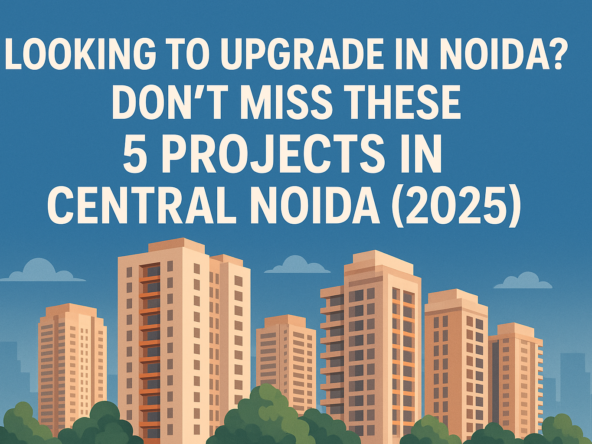Noida Sports City Fiasco: An Examination of Systemic Failures and Institutional Malfeasance
Introduction
The Noida Sports City project, conceptualized in 2007, was envisioned as a flagship initiative to establish Noida as a preeminent hub for international sporting events. The ambitious blueprint encompassed state-of-the-art sports infrastructure, including cricket stadiums, golf courses, multi-sport arenas, and aquatic centers, across Sectors 76, 78, 79, 101, 102, 104, and 107. However, an in-depth audit by the Comptroller and Auditor General (CAG) has exposed a series of systemic failures, regulatory oversights, and widespread financial mismanagement, culminating in a loss exceeding ₹9,000 crore. Instead of fulfilling its intended purpose, the initiative was co-opted into a speculative real estate enterprise that disproportionately benefited private developers while systematically neglecting public interest and urban planning integrity.
Genesis and Structural Framework of the Project
In April 2008, the Noida Authority appointed Grant Thornton as the chief consultant to formulate the structural framework and allocation strategy for the Sports City initiative. The consultancy proposed a phased development model; however, initial bidding rounds between October 2008 and January 2009 failed to generate interest, attributed to fundamental design flaws and unfavorable financial stipulations. A strategic recalibration in 2010 resulted in a reduction of the total project area from 311 hectares to 150 hectares, accompanied by a revised reserve price of ₹11,500 per square meter. This iteration facilitated the launch of four distinct development schemes between 2011 and 2015, cumulatively spanning 798 acres. Despite land allotments and substantial financial transactions, the anticipated sports infrastructure remains largely unrealized, indicating a significant departure from its original purpose.
Financial Structuring and Allocation of Plots
A granular examination of the financial structuring and plot allocations, as presented in Table 5.2.10 of the CAG report, underscores glaring inconsistencies in the distribution framework and pricing mechanisms:
| Scheme Year | Sector & Plot Number | Area (sqm) | Developer | Reserve Price (₹ per sqm) | Allotted Price (₹ per sqm) | Total Value (₹ crore) |
| 2010-11 | SC-01-01, 78/79 | 7,27,500 | Xanadu Estates Pvt. Ltd. | 11,500 | 12,075 | 848.87 |
| 2010-11 | SC-01, Sector 150 | 8,00,000 | Logix Infra Developers | 11,500 | 12,050 | 1,094.13 |
| 2014-15 | SC-02, Sector 150 | 12,00,000 | Lotus Greens Constructions | 18,865 | 19,400 | 2,579.71 |
| 2015-16 | SC-01, Sector 152 | 5,03,000 | ATS Homes Pvt. Ltd. | 26,200 | 26,650 | 1,075.21 |
| Total | – | 32,30,500 | – | – | – | 5,597.92 |
Regulatory Deficiencies and Policy Inconsistencies
The Sports City project suffered from a chronic failure of regulatory oversight. At inception, the initiative lacked the requisite approvals from the National Capital Region Planning Board (NCRPB), contravening established urban development mandates. Compounding these regulatory lapses, the Noida Authority unilaterally integrated the Sports City concept into the Master Plan 2031, a document that remains unapproved, further undermining its legal legitimacy.
The project’s structural vulnerabilities were exacerbated by the arbitrary relaxation of financial eligibility thresholds. Grant Thornton had initially recommended a minimum net worth criterion of ₹100 crore and a turnover of ₹400 crore for prospective developers. However, the Noida Authority unilaterally lowered these benchmarks to ₹80 crore and ₹200 crore, respectively, enabling financially weaker entities to qualify. This decision significantly undermined the fiscal sustainability of the project, as many developers lacked the requisite capital reserves and operational capacity to execute large-scale sports infrastructure projects. Furthermore, the absence of consultation with key regulatory bodies such as the Sports Authority of India (SAI) and the Board of Control for Cricket in India (BCCI) further illustrates the institutional failure to ensure adherence to international sporting standards.
Misappropriation of Land and Economic Ramifications
A critical issue identified in the CAG report is the systematic misappropriation of land. The regulatory framework mandated that 70% of allocated land be dedicated to sports infrastructure. However, in practice, a significant proportion was illicitly repurposed for residential and commercial projects. Developers subdivided the allotted plots into 81 smaller parcels, a maneuver designed to circumvent statutory land-use restrictions, resulting in an estimated revenue loss of ₹437 crore due to uncollected transfer charges. Despite an expansive blueprint that envisaged 45,959 housing units, the complete absence of any functional sports infrastructure underscores the exploitative and opportunistic nature of the scheme.
The Homebuyer Dilemma and Legal Complexities
A considerable number of homebuyers who invested in these developments were misled by the marketing narrative, which portrayed the Noida Sports City as an integrated sports-residential township. With developers reneging on their commitments to construct sports facilities, thousands of homebuyers found themselves embroiled in prolonged legal battles, attempting to secure either compensation or the fulfillment of promised infrastructure. The failure of the Noida Authority to enforce compliance exacerbated the crisis, leading to an erosion of public trust in institutional accountability.
Judicial Intervention: Supreme Court Ruling (March 10, 2025)
Recognizing the gravity of the issue, the Supreme Court of India issued a landmark ruling on March 10, 2025. The verdict mandated the immediate cancellation of land allocations where developers had failed to meet the prescribed infrastructural obligations. Additionally, the court directed the Enforcement Directorate (ED) and the Central Bureau of Investigation (CBI) to expedite their investigations into financial misappropriations linked to the project. The ruling further compelled the Noida Authority to complete all pending property registrations within a six-month period, ensuring that homebuyers were granted legal ownership of their properties.
The Supreme Court’s directive is expected to establish a critical legal precedent, reinforcing the necessity for regulatory compliance in urban planning initiatives. However, the effective implementation of this ruling will depend on the rigor with which enforcement agencies pursue delinquent developers and implicated government officials.
Policy Recommendations and the Path Forward
To prevent the recurrence of similar debacles, a robust regulatory overhaul is essential. Several corrective measures must be institutionalized to enhance transparency, mitigate financial risks, and ensure adherence to urban planning guidelines:
- Mandatory Pre-Approval from NCRPB: All large-scale urban development projects should require explicit approval from the NCRPB before launch.
- Strict Developer Qualification Criteria: Financial eligibility standards should be rigorously enforced, preventing undercapitalized entities from securing large-scale infrastructural projects.
- Independent Oversight Committees: An autonomous regulatory body should be established to oversee the implementation of government-sanctioned urban projects.
- Mandatory Escrow Accounts for Developers: Requiring developers to deposit project funds in escrow accounts would ensure financial discipline and accountability.
- Public-Private Partnership (PPP) Frameworks: Future sports infrastructure projects should be structured under PPP models to maintain oversight while leveraging private sector expertise.
Conclusion
The Noida Sports City project epitomizes the consequences of unchecked administrative power, regulatory negligence, and corporate malfeasance. The findings of the CAG report highlight a systemic failure to uphold ethical governance practices, compounded by the complicity of institutional stakeholders in enabling financial irregularities. The Supreme Court’s ruling provides a crucial inflection point, but sustained vigilance and policy reform will be required to prevent the perpetuation of similar mismanagement in future urban planning initiatives. Without decisive intervention, the aspiration for world-class sports infrastructure in Noida will remain a distant dream, overshadowed by the entrenched realities of corruption, opportunism, and administrative incompetence.




